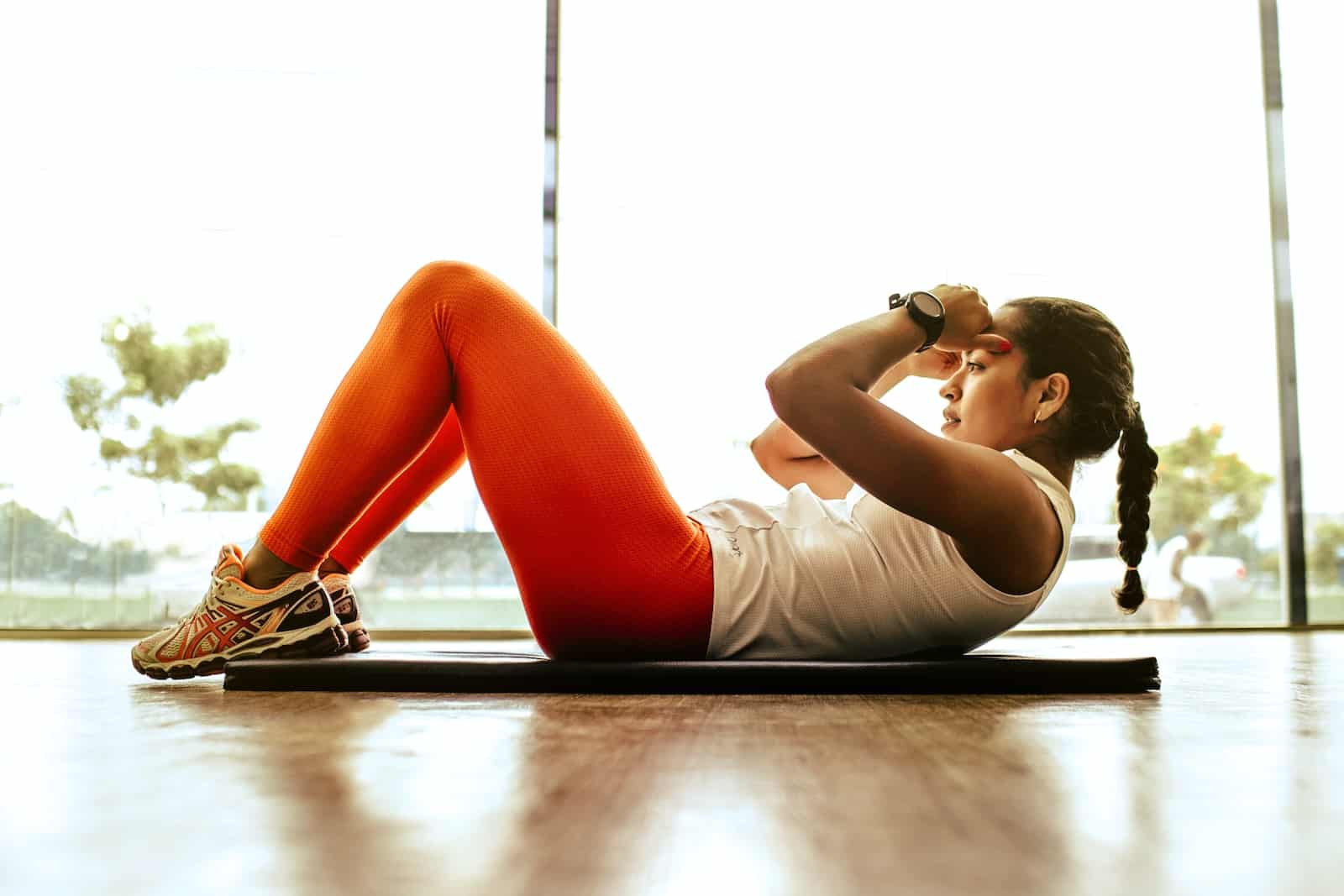
You can see this effect making itself apparent in the physiques that highly motivated people acquire during their lifetimes. You can have two people who work out at the same intensity for the same length of time (and also have excellent nutrition) and yet one is much more massive than the other.
The question, of course, is what’s driving this trend? Why are some people so much more successful than others in the gym?
That’s the topic of this post. We look at the reasons some people can’t pack on muscle followed by what they can do about it. Read on to learn more:
Why Can’t Some People Pack On Muscle?
Knowing why some people find it difficult to pack on muscle (despite their best efforts) can be helpful for anyone involved in fitness. It helps you understand the situation, even if your goal isn’t to get as big as possible.
Muscle Fiber Types
One reason some people can’t pack on as much muscle as others is their muscle fiber type. Having more of the slow-twitch variety sets you up for disappointing results in the gym.
For the record, fast-twitch fibers are those the body recruits for explosive movements. You see plenty of these on strongmen, professional wrestlers, and even gymnasts.
Slow twitch fibers are different. These are more for endurance and tend to dominate the physiques of runners and cyclists.
Unfortunately, what you have depends on your genetics. Some people are naturally explosive, while others find it easier to run long distances.
If you notice you have a naturally lean and wiry physique, you may have more of the slow-twitch variety, and that fact might be getting in the way of your gains. The only way to truly discover which muscle type you have is to get a biopsy done and compare your composition to the average. If you have more in the slow-twitch direction, your actual muscles might be to blame for the lack of progress, not your commitment or diet.
Muscle-Building Genetics
Another factor that might be getting in the way of packing on muscle is your muscle-building genetics. Again, some people respond better to exercise than others.
How much your body adapts to stresses in the gym depends on things like your hormone levels and muscle protein synthesis. If you’re naturally high in testosterone, you’re more likely to put on muscle and recover from training sessions faster. More muscle will also get built if there are fewer of the body’s inhibitory factors getting in the way.
You can manipulate these genetic factors, but again, the options are limited. Some people have success changing their lifestyle, but not all.
Low-Calorie Intake
You might also be struggling to gain muscle if your overall calorie intake is too low. Even if you’re getting adequate protein, you still need energy to signal to the body it’s time to grow.
Bodybuilders often want to “cut and bulk” at the same time, and there are endless online articles on this topic explaining how it can be done. Unfortunately, it doesn’t match biological realities. If the body is shedding pounds, building new muscle is essentially impossible.
You can build muscle from a low base, but seriously muscular physiques almost always require a massive calorie surplus to maintain.
No Use Of Compound Movements
Another reason people can’t pack on muscle is the lack of compound movements in their exercise routine. If you don’t activate the big muscle groups, you won’t induce the hormonal changes necessary to promote muscle growth and synthesis.
You often see people in the gym focusing on one or two isolation exercises, believing they will help them grow bigger arms or thighs. But, unfortunately, these finishing moves don’t usually have much of an effect. Some people can see success with them, but they’re usually super responders, not the average person.
Too Much Training
On the flip side, you also see people doing too much training. These individuals are in the gym every day, working hard to get their optimal physique.
Again, overtraining is a problem because the body doesn’t have time to recover and adapt. Muscles can’t grow back stronger if you’re breaking them down every day without that essential recovery period.
Insufficient Protein Intake
Less common is insufficient protein intake. Bodybuilders and strength trainers don’t require huge quantities of this macronutrient to improve muscle performance, but they need enough.
If you’re on a strictly plant-based diet, you might need to supplement with additional protein powders and shakes to get the results you want. You might also struggle to get enough protein if you’re eating a carb-heavy diet that leaves you feeling lean.
Low Intensity
Another rare reason people can’t pack on muscle is low training intensity. Some athletes simply don’t understand the effort required to build larger muscles.
Low intensity usually means training at 50% or below muscles’ maximum capacity without going to failure. Usually, arms, legs, back, and shoulders won’t feel sore after a session like this (although soreness isn’t always a sign you worked out properly).
What Can You Do To Pack On More Muscle?
With that said, what can people do to pack on more muscle? How can you adapt your training routine to be more effective and give you the results you want?
Train Smarter
The first step is to focus on the exercises that are really going to make a difference to your muscle size and strength. Concentrating on compound movements, like the deadlift, squat, and row can activate more of the body’s muscle-building potential, enabling it to pack on lean mass faster.
You should also focus on getting more rest between training sessions. Most natural athletes spend three to four days per week in the gym maximum to allow for recovery.
You’ll notice that if you try to do five or more intense gym sessions per week, you start feeling exhausted. The effort required is too great and eventually your nervous system can’t expend the effort required to keep making gains.
When this issue rears its ugly head, simply take a step back from training. Ensure you’re getting adequate rest between workouts. If you’re feeling tired, don’t beat yourself up for taking a week off. You’ll usually come back stronger and be able to break through plateaus.
Improve Your Diet
At the same time, you’ll want to probe your diet and look for where you can make improvements. Generally speaking, you’ll need to be above 1 gram of protein per kilogram of body weight, if not more.
However, avoid living off protein shakes. While they are convenient, they won’t always lead to developing the physique you want.
Ensure you give your body everything else it needs. Think fruits, vegetables, and whole grains. These foods contain valuable compounds that enable the body to maintain more muscle while being leaner. Phytonutrients also support metabolism, and gut health and prevent diseases, helping you stay more robust for longer (giving you more time to build the physique you want).
The nutrients in fruits and vegetables are also helpful for recovery. The body uses vitamins and minerals at a high rate when building new muscles and adapting to exercise stimuli.
Don’t be surprised if you notice a reduction in your recovery times, too. Berries, green tea, and some herbs can reduce the time you need to wait between workouts without affecting adaptation or exercise performance.
Measure Your Progress Over Time
It’s also a good idea to measure your progress over the weeks and months you train. Sometimes it seems you’re not packing on muscle even if you are every time you look in the mirror because your body looks the same.
Don’t rely on your visual impression alone. Take time to measure your body composition at the gym so you have a more accurate picture of where you stand.
You can also take pictures of yourself every month or so if you prevent the “before and after” experience. This way, you can track progress over longer periods.
Get Professional Help
If you’re still finding it hard to pack on muscle, it can help to go to a professional. Trainers will evaluate your routine from top to bottom and look for problems with your approach.
Sometimes, they’ll uncover unexpected issues with your diet. Often, it can look like you’re eating a lot, but because most of it is healthy, you might not be getting the calories you need to thrive.
Other times, the problem can be your approach to training. Perhaps you’re going to the gym too much or too little.
Remember, though, that in some cases, it is just hard to put on muscle. Under these circumstances, it might be worthwhile exploring alternative supplements and therapies to see if something works for you.
Hardly any strength athletes get to where they want to be without trial, error, and experimentation.




